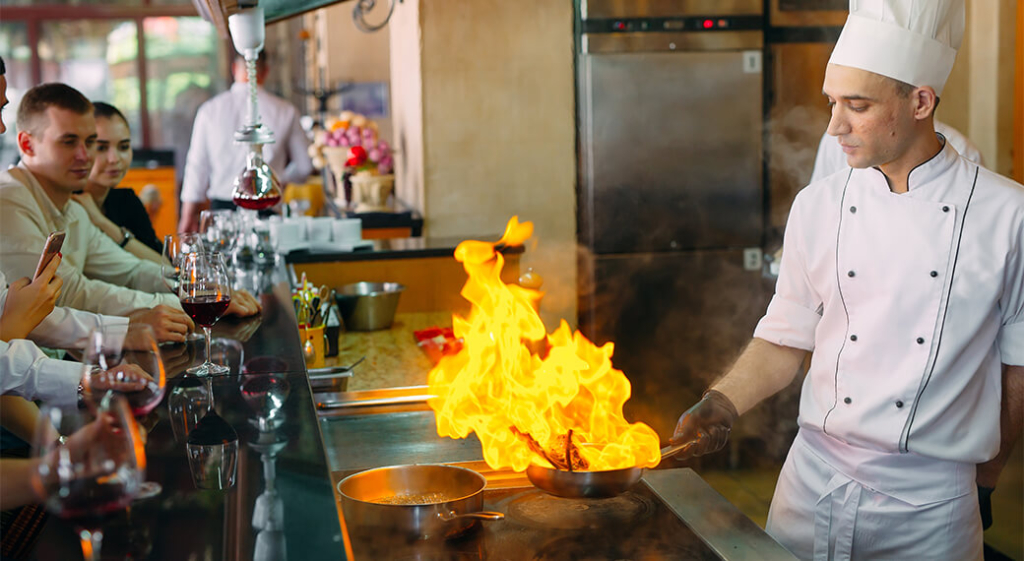Stepping beyond the typical, closed-off preparation area, open kitchens offer a multisensory spectacle, enticing guests and influencing their perception of the food and the overall dining experience. In this article, we explore how open kitchens tap into sensory psychology principles to build trust and ultimately, create a better dining experience.
Where Food and Performance Collide
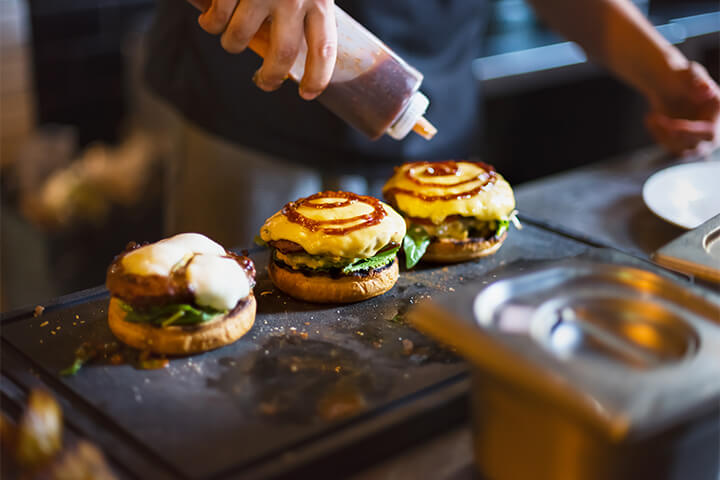
Straightaway, the most immediate impact of an open kitchen lies in its visual appeal. Witnessing expert meal preparation firsthand offers a transparency into the restaurant’s operations. Chefs become performers as their skillful execution of culinary techniques captivates guests.
Psychologically speaking, allowing guests to view a kitchen builds trust. Here’s why.
Reduction of Uncertainty
An open kitchen eliminates the barrier between the diner and the food preparation process. This transparency reduces uncertainty about the quality of ingredients, hygiene practices, and the skill of the culinary staff. By removing any element of “mystery,” diners feel confident about what they’re about to consume.
The Halo Effect
The Halo Effect is a cognitive bias where our perception of one trait influences our perception of other traits. Seeing a clean, well-organized, and professional kitchen builds positive associations and subconsciously leads the diner to believe that the food will also be of high quality.
Aromatic Alchemy

The heavenly aromas wafting from an open kitchen create an olfactory experience that stimulates the brain’s pleasure centers. Whether it’s the scent of entrees roasted to perfection, the fragrant herbs simmering in broth, or the freshly baked bread beckoning bodies to indulge in some carbs, guests experience a multifaceted fragrance that whets the appetite and heightens anticipation.
This powerful sensory cue goes beyond simply smelling good; it evokes memories, conjures positive associations, and primes diners for their meal. For this reason, allowing aromas to permeate the dining space creates a subliminal connection between the preparation and consumption of the food.
Open Kitchen Acoustics
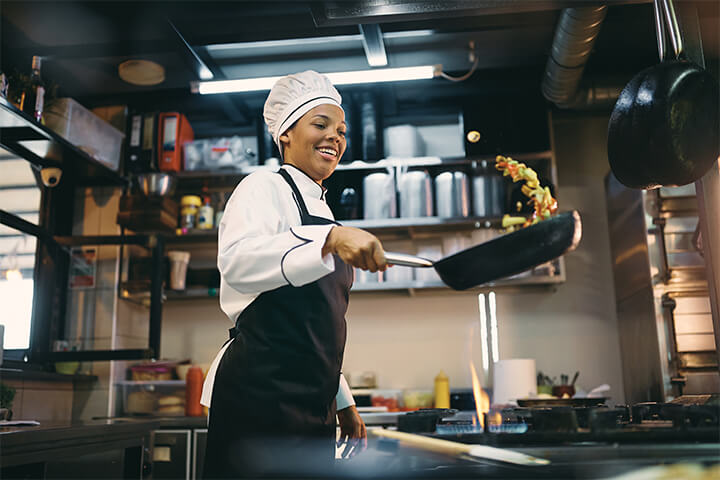
While often overlooked, the sounds emanating from an open kitchen play a crucial role in its sensory impact. The rhythmic sizzle of pans, the satisfying chop of knives, and the murmur of chefs create a dynamic soundscape that adds another layer to the dining experience.
These sounds, unlike excessive noise, can be invigorating and engaging, conveying a sense of energy and passion behind the food preparation. In a carefully managed open kitchen, these sounds become part of the sensory landscape, seamlessly blending with the music and conversation.
Considerations and Caveats
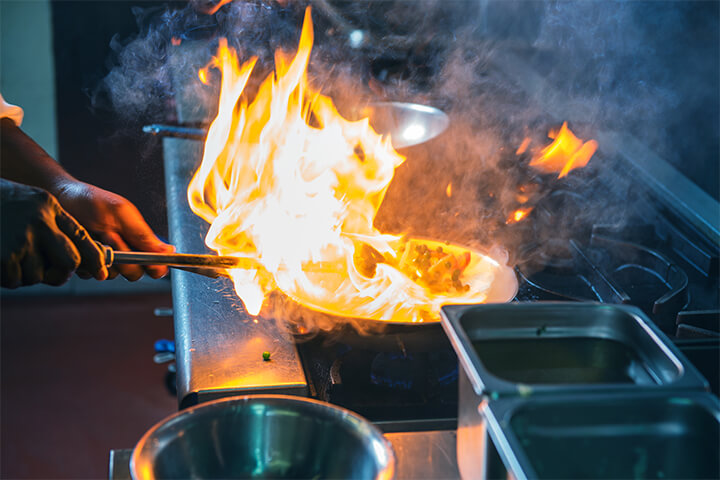
While open kitchens offer undeniable benefits, they also require careful planning and execution. The kitchen layout and design should prioritize cleanliness and visual appeal, and chefs should be trained to maintain a professional and engaging demeanor when interacting with guests. A messy, chaotic, or poorly-run open kitchen will have a negative effect on guests.
It’s important to note that open kitchens might not be suitable for all restaurant concepts or customer preferences. In any case, hiring an experienced commercial kitchen designer is the wisest move.
From Backstage to Centerstage
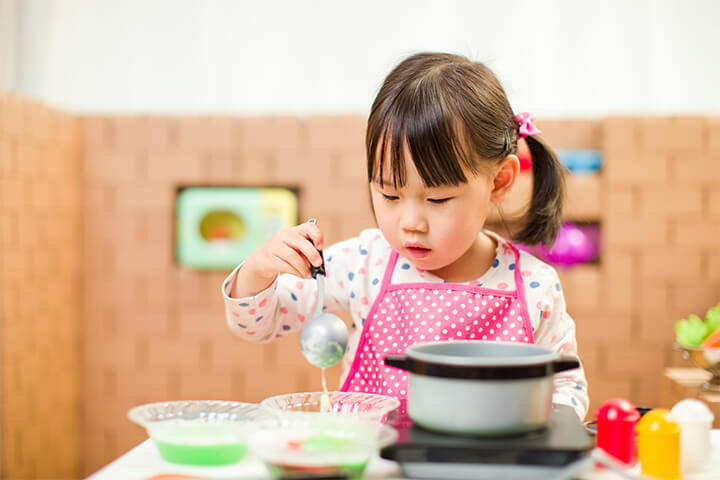
Open kitchens, when designed and managed thoughtfully, tap into the power of sensory psychology to create a truly engaging and memorable dining experience. By stimulating sight, smell, and sound, trust is gained, leaving a lasting positive impression on guests. What are your thoughts on open kitchens? Let us know in the comment section!

